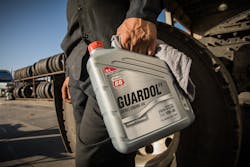With a fleet to manage and a bottom line to protect, you don’t always have time to research things like the new API FA-4 diesel engine oil category. As we approach the second anniversary of first licensing for the new API Service Categories, it is worth highlighting the most notable trends and opportunities available with the advent of these new products.
A recap on CK-4, FA-4
The previous category, API CJ-4, was in place for 10 years. During that time, engine builders made many significant changes to their designs, leading to the need for an improved oil service category. The combination of higher power densities (smaller displacement engines providing more power), improved aerodynamics and modern emissions systems has resulted in higher engine temperatures, which increases the need for oils with enhanced thermal stability and oxidation control. Additionally, federal regulations continue to emphasize improved fuel economy for heavy-duty trucks, which resulted in the groundbreaking split categories – API CK-4 as a direct replacement of CJ-4, and the first-ever “F” category, FA-4, for fuel efficient oils. These FA-4 products are exclusively 10W-30 and 5W-30 viscosities.
How do the new FA-4 oils provide better fuel economy?
Perhaps the most confusing aspect of the new categories is the emergence of two different 10W-30s (CK-4 and FA-4). They are both the same Kinematic Viscosity, so what is the difference? Simply put, the FA-4 10W-30 has lower internal fluid friction, which provides the fuel economy advantage since it takes less energy to pump it through the engine. This property, known as Absolute Viscosity (reported in centipoise [“cP”]), measures frictional drag within the lubricant itself using the High Temperature/High Shear test, which is designed to emulate the area between an engine’s crankshaft and the connecting rod journal bearings in a warmed-up engine. It’s important to remember that FA-4 products must pass the same exact performance tests as CK-4 oils, but must do it with the lower HTHS values. Holding FA-4 to the same performance standard ensures that there is no compromise in the level of protection provided.
To learn more about the benefits of API FA-4, visit Phillips66Lubricants.com

